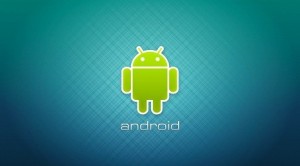Google is Taking Control of Android
Google, which already runs the world’s busiest search engine, is mapping/photographing the world and building driver less cars, is now moving into the homemade television-content business among a few other markets.
Consumers will soon be able to connect their televisions and Android devices to form de facto home television studios. And that’s not all, at least according to news announced onstage June 25 on Day 1 of Google I/O, the annual developers’ conference here at Moscone West. Google, like its cross-Silicon Valley competitor, Apple, wants to be everywhere you are: in your phone, laptop, tablet, television, car, home, business and even on your face (with Google Glass). If there’s anyplace else left untouched, it probably wants to be there, too.
Google I/O’s three-hour-long keynote address was jammed with Android and Chrome-related news, ranging from connected wearable computers to devices and software for home, business and vehicles. The Mountain View, Calif.-based company released Android v4.4, also called Android L, which includes a “kill” command for smartphones which disables them in the event they are lost or stolen. Law enforcement officials have been calling for this feature for a couple of years.
With Android L, it appears Google has made something it doesn’t want outside manufacturers messing with, even though it will still be able to when it comes to phones and tablets. But in a refreshing, perhaps transformative decision, Google stated that it will maintain total control of the software experience for Android Wear and the forthcoming Android TV. From someone that believes that a uniform user experience is better than a free-for-all open platform, Google suddenly taking the reigns of its software experience has changed how I’ll judge the company when it comes time to buy my next Android-powered tech.
However, one has to ask if Google’s new state of control will eventually carry over to Android on mobile. While rumors of the Nexus line’s demise have been denied, Google’s Android “Silver” initiative may be focused on flagship devices with pure Android installed. That sounds great, but what about budget and mid-range devices? Will the hell stew continue unabated when Android L gets released to OEMs, or will Google gradually start locking things up to preserve its Material Design vision?
While many Android purists may claim that Google is turning away from its open source roots, the reality is that the future of Android, like iOS, will be about much more than phones. It will be watches, television, thermostats, cars, and everything else that can be connected with an app. Google’s ultimate nightmare could have seen multiple hardware products in the hands of consumers with thousands of variations of Android. It has seen the incompatibility epidemic that’s plagued Android phones and tablets, and it’s finally saying no more. And it’s about time.




